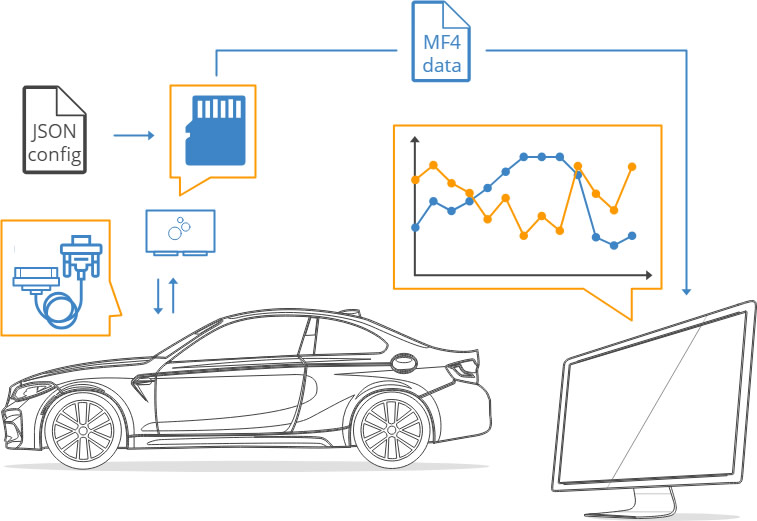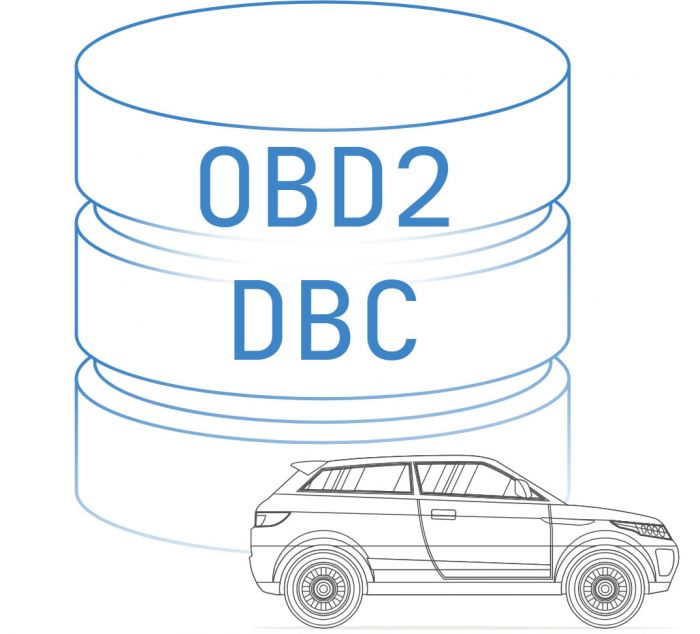Utilizziamo i cookie per rendere migliore la tua esperienza di navigazione. Per rispettare la nuova direttiva sulla privacy, è necessario chiedere il tuo consenso per impostare i cookie. Per saperne di più.
When is an OBD2 DBC used?
The OBD2 protocol is used across practically all passenger cars today. Because OBD2 is standardized, you can use the OBD2 DBC file to decode OBD2 PID data across different car brands/models/years OBD2 data logging and telematics.
What is a DBC file?
A DBC file (CAN database) is a standardized format for storing decoding rules used for converting raw CAN bus data into human-readable form (aka physical values). For details, see our intro to the DBC file format.
Will the OBD2 DBC decode all OBD2 PIDs?
The OBD2 DBC file serves as an OBD2 PID database for service mode 01. This includes useful OBD2 parameters like Speed, Engine Speed, Fuel Level, Throttle Position, Mass Air Flow Rate (MAF), Engine Fuel Rate and more. In total the OBD2 DBC contains ~150 OBD2 PID decoding rules. However, it is important to note that it differs by car model/year what OBD2 PIDs you can extract. In simple terms, you can set up an OBD2 logger to attempt to request a set of OBD2 parametesr from the car. If the car supports a requested OBD2 PID, it will send a response containing the current OBD2 data value. If the requested OBD2 PID is part of our OBD2 DBC (i.e. part of the service 01 standard OBD2 PIDs), you'll be able to decode the raw OBD2 data response using the OBD2 DBC and e.g. the free asammdf GUI (when using a CANedge1 or CANedge2).
Can I add proprietary OBD2 PIDs?
If you have proprietary or OEM specific OBD2 PID decoding rules, you can of course add these to the OBD2 DBC file. In our DBC intro you'll also find a list of online databases with proprietary CAN/OBD2 decoding rules for cars. You can e.g. use our online DBC file editor to make the changes.
How does OBD2 data logging work?

First, let us briefly recap the basics of OBD2:
OBD2 offers a standardized set of parameters (OBD2 PIDs) that you can record - and easily decode - across most cars.
To log OBD2 data involves 3 simple steps:
- Configure your OBD2 logger with a list of OBD2 PIDs
- Connect it in your car via an OBD2 adapter to start logging
- Extract the SD and decode the data via the free software/API
OBD2 logging lets you collect data from practically any car - below are the top benefits:
Driver/vehicle/part optimization
OBD2 data lets you e.g. monitor/optimize driving behavior and tune your car. OEMs can use the data to analyze the performance of new prototype parts in the field
Rare issue diagnostics
Rare issues in cars may occur briefly while driving, yet not during repairs. Logging the OBD2 data lets you analyze the period around an event to troubleshoot the problem
Car fleet management
OBD2 logging at fleet level enables e.g. driver behavior research, fuel cost reductions, reduced breakdowns, compliance, dispute handling and other valuable benefits
Data control & custom integration
With an OBD2 logger, you record the raw time series data, which can be extracted via SD or uploaded to your own server - for easy custom integration via open APIs
Non esitare a metterti in contatto con i nostri esperti.
Basta chiedere qui



